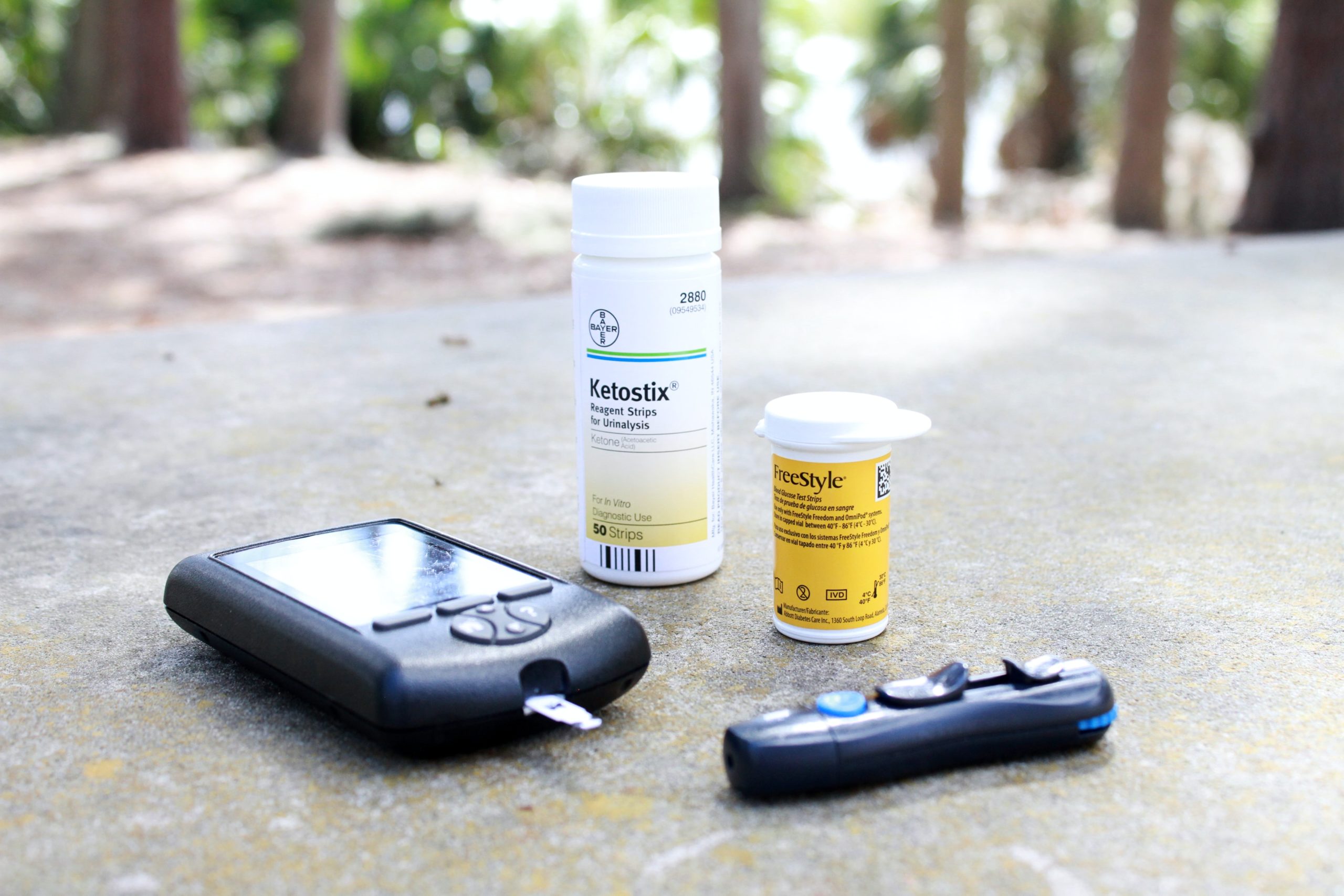The human body naturally has sugar, or glucose, in the blood. The right amount of blood sugar gives the body’s cells and organs energy. Too much blood sugar is known as hyperglycemia.
The liver and muscles produce some blood sugar, but most comes from food and drinks that contain carbohydrates.
In order to keep blood sugar levels within a normal range, the body needs insulin. Insulin is a hormone that directs the body’s cells to take up glucose and store it.
If there is not enough insulin, or insulin does not work properly, blood sugar builds up. High blood sugar levels can cause health problems.
What does hyperglycemia feel like, why does it happen, and how do you know if your blood sugar levels are too high? Read on to find out more.

Blood sugar is fuel for the body’s organs and functions.
But, having high blood sugar does not provide a boost in energy.
In fact, the opposite often happens, because the body’s cells cannot access the blood sugar for energy.
How does this feel?
When a person has high blood sugar, they may:
- have a headache and other aches and pains
- find it hard to concentrate
- be very thirsty or hungry
- feel drowsy or tired
- have blurred vision
- feel their mouth is dry
- have bloating
- need to urinate often
- notice that wounds take a long time to heal
High blood sugar and low insulin can lead to a rise in ketones, and possibly diabetic ketoacidosis (DKA), a serious complication that needs urgent medical attention.
If this occurs, the individual may experience:
- shortness of breath
- a fruity taste or smell on the breath
- a rapid heartbeat
- confusion and disorientation
- vomiting
- dehydration
- coma
In addition, the person’s blood sugar levels may be over 250 ml/dL.
People can experience high blood sugar levels in the morning, especially if they have diabetes. Click here to find out more.
Testing kits for levels of blood sugar and ketone levels are available for purchase online, for use at home.
However, anyone who thinks they have diabetes should see a doctor first.
How does high blood sugar affect the body?
High sugar in the blood can lead to a number of other symptoms and complications. Here are just a few.
Urination and thirst: High blood sugar goes into the kidneys and urine. This attracts more water, causing frequent urination. This can also lead to increased thirst, despite drinking enough liquids.
Weight loss: High blood sugar can cause sudden or unexplained weight loss. This occurs because the body’s cells are not getting the glucose they need, so the body burns muscle and fat for energy instead.
Numbness and tingling: High blood sugar can also cause numbness, burning, or tingling in the hands, legs, and feet. This is due to diabetic neuropathy, a complication of diabetes that often occurs after many years of high blood sugar levels.
Long-term complications
Over time, high blood sugar results in harm to the body’s organs and systems. Damage to the blood vessels can lead to complications, including:
- heart attack or stroke
- damage to the eye and loss of vision
- kidney disease or failure
- nerve problems in the skin, especially the feet, leading to sores, infections, and wound healing problems

Several types of diabetes can lead to high blood sugar.
In type 1 diabetes, the immune system attacks the cells in the pancreas that produce insulin. As a result, the body lacks insulin and blood sugar levels rise.
People with type 1 diabetes must take insulin through a needle, pen, or insulin pump to keep blood sugar levels within the target range.
Only 5 percent of all people with diabetes have type 1, according to the American Diabetes Association.
In type 2 diabetes, the body does produce insulin but is unable to use it properly. The pancreas tries to make more insulin, but often cannot make enough to keep blood sugar levels steady. This is known as insulin resistance.
People with type 2 diabetes may need to take insulin, pills, or make diet or exercise changes to help manage blood sugar levels.
Gestational diabetes can happen when insulin resistance and high blood sugar levels appear during pregnancy. People should monitor this during pregnancy, as it can lead to complications for the mother and the baby. Gestational diabetes usually goes away after delivery.
Cystic fibrosis: There may be a link between diabetes and cystic fibrosis.
Medications: People who take beta blockers and certain steroids may also experience high blood sugar.
Risk factors for high blood sugar
Doctors do not know exactly what causes diabetes. Some factors may increase the risk, however.
Type 1 diabetes
Researchers believe certain genetic or environmental factors may make people more likely to get type 1 diabetes.
The National Institute of Diabetes and Digestive and Kidney Diseases (NIDDK) say certain genes play a role, and other factors — such as viruses and infections — may have an impact.
The Juvenile Diabetes Research Foundation say that there is nothing a person can do to prevent type 1 diabetes. Eating, exercise, or other lifestyle choices will not change the outcome.
Type 1 diabetes usually begins during childhood or early adulthood, but it can happen at any age.
Type 2 diabetes
The following risk factors may make developing type 2 diabetes more likely:
- having certain genes
- being overweight or inactive
- having a parent or sibling with type 2 diabetes
- having African-American, Alaska Native, American Indian, Asian-American, Hispanic, or Pacific Islander ethnicity
- being aged over 45 years
- receiving treatment for high blood pressure, or having blood pressure of 140/90 or higher
- having low levels of “good” HDL cholesterol or high levels of triglycerides
Your answers will help us improve our experience. You’re the best!

People who have high blood sugar should discuss their target levels with their doctor.
They may need regular testing to keep these within a healthy range. Each person is different and levels can vary between individuals.
To find out their blood sugar levels, the person may need to fast for 8 hours, 2 hours after a meal, or at both times.
Some people may also take a glucose tolerance test, in which they drink a sugary liquid and have a blood test after.
The American Diabetes Association recommend a pre-meal blood sugar level of 80–130 milligrams per deciliter (ml/dL). Around 1 to 2 hours after the beginning of a meal, blood sugar should be less than 180 ml/dL.
Managing blood sugar levels
Many people with diabetes must check their blood sugar levels daily with a glucose meter. This device takes a drop of blood, usually from a finger, and displays the sugar level within a few seconds.
People with type 1 diabetes will need to take insulin as their doctor recommends, usually several times a day.
Those with type 2 diabetes or gestational diabetes may need to change their diet and exercise habits. They may also need to take oral medications or insulin.

A number of strategies can help prevent hyperglycemia.
People should:
- check their blood sugar levels as their doctor advises and take the correct amount of insulin, if they have type 1 diabetes
- speak to their healthcare provider or dietitian about which foods to eat or avoid, how much to eat, and how often
- take precautions to avoid infections, for example, through regular hand washing, as illness, such as a cold, can trigger a rise in blood pressure
- plan their food intake and exercise to balance blood sugar levels
- minimize stress, as far as possible, for example, through exercise, getting enough sleep, and stress-reducing activities such as meditation or yoga
Low blood sugar, or hypoglycemia, can happen when a person:
- has certain medical conditions
- uses specific medications
- does a lot of exercise
- skips meals or eats too little
It can also be a side effect of diabetes medicines. Taking too much insulin can result in low blood sugar levels.
Symptoms of low blood sugar may include:
- feeling weak or shaky
- sudden nervousness, anxiety, or irritability
- sweating or chills
- extreme hunger
- confusion
- fast heart rate, or palpitations
A person can treat hypoglycemia rapidly by drinking a fruit juice or eating a glucose tablet, sugar lump, or candy.
Anyone who has frequent episodes of low blood sugar should speak to a doctor. They may recommend changing the type of dose of medication.
Anyone who experiences tiredness, increased thirst, frequent urination, or weight loss should see a doctor, as these could indicate diabetes or another health problem.
A routine health check often involves blood sugar testing, even if the person has no symptoms.
The U.S. Preventive Services Task Force recommend that adults age 40 to 70 years who are overweight have tests for diabetes.
Those with a family history of diabetes or other risk factors may need earlier or more frequent tests.
When a person has diabetes, their health and well-being depend on proper management of blood sugar levels.
To improve or maintain a good quality of life, the person should:
- visit a doctor regularly
- take medications as the doctor prescribes
- following diet and exercise guidelines
These strategies can help a person with diabetes to manage blood sugar, and this may slow the progression of diabetes.


Recent Comments